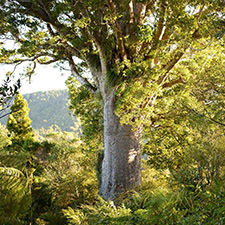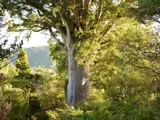 Kauri dieback disease
Kauri dieback disease
Common name: Kauri dieback disease
Organism name: Phytophthora agathidicida (PA)
Management category: Exclusion
Why is it a pest?
- Kauri dieback disease is caused by a soil-borne pathogen called Phytophthora agathidicida (PA).
- Kauri dieback disease is both incurable and fatal in kauri trees (Agathis australis), potentially threatening the very existence of kauri forests in the region.
- The Kauri dieback pathogen infects the tree through its roots and damages the tissues that carry nutrients and water within the tree; effectively starving it to death.
Where is it found?
As of 2020 Kauri dieback disease has not been detected in the Bay of Plenty region. Outside of the region kauri dieback disease is found sporadically in Northland, Auckland and Waikato regions.
What does it look like?
This organism is microscopic and unable to be seen by the naked eye. However, symptoms of the disease caused by the pathogen include yellowing and thinning of the canopy, lower trunk bleeding of the tree, and tree death. It could take years for an infected tree to display symptoms.
The main tool to preventing the arrival of Kauri dieback disease in the Bay of Plenty is to stop soil movement within three times the rainfall ‘drip canopy’ of kauri.
- Avoid activities within close proximity to any kauri trees.
- Always use kauri cleaning stations at track entrances.
- Remove all soil from your gear both before and after forest visits, including shoes, tyres and equipment.
- Stay on the track and away from all kauri roots.
- Exclude stock from kauri forests.
- Manage feral animals such as pig, deer, and goats.
How do you get rid of it?
Council will maintain control and management of this species. Please get in contact if you think you have seen this pest or have it on your property.
Images

